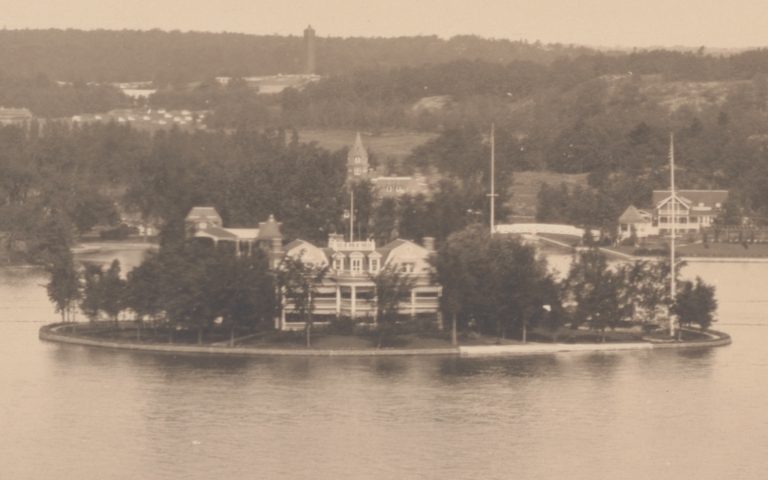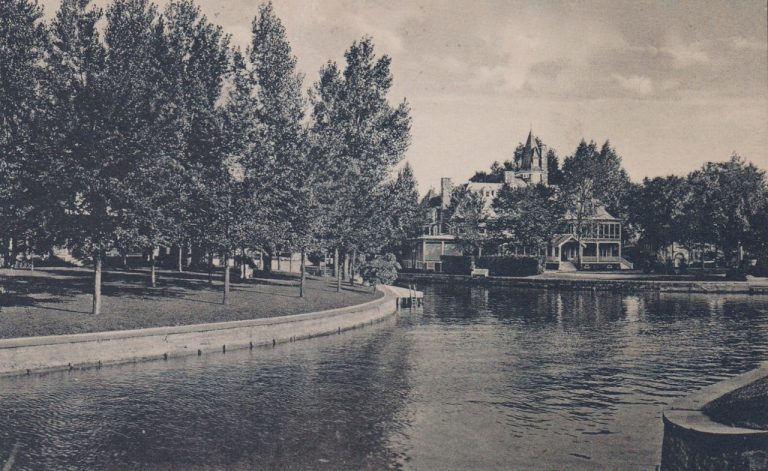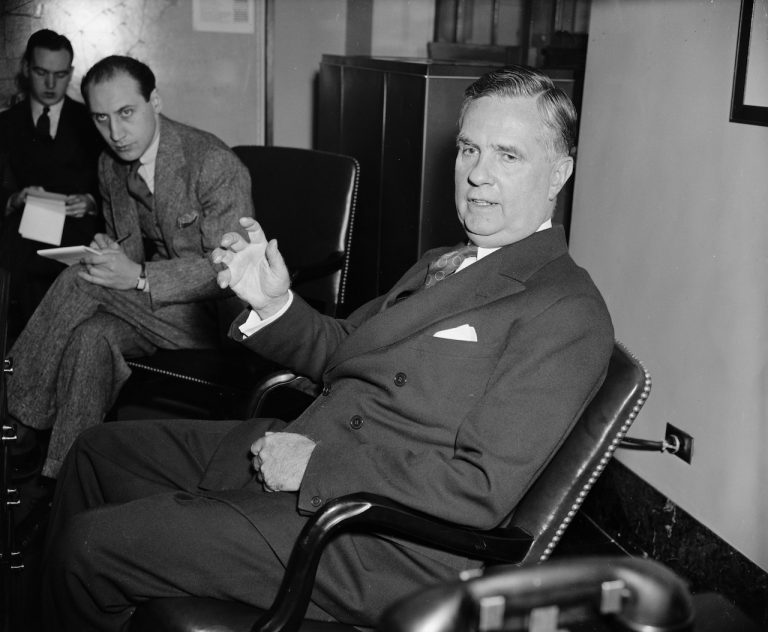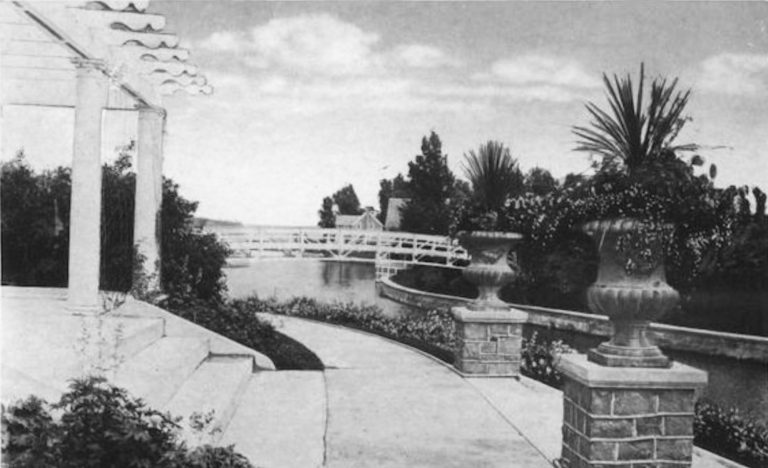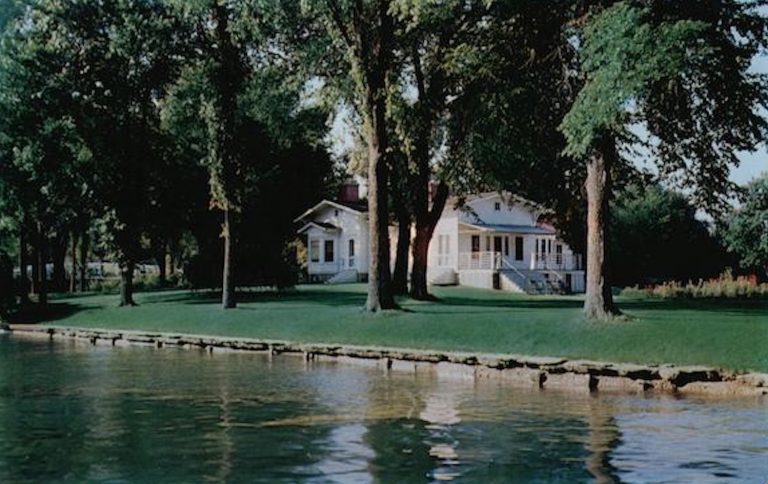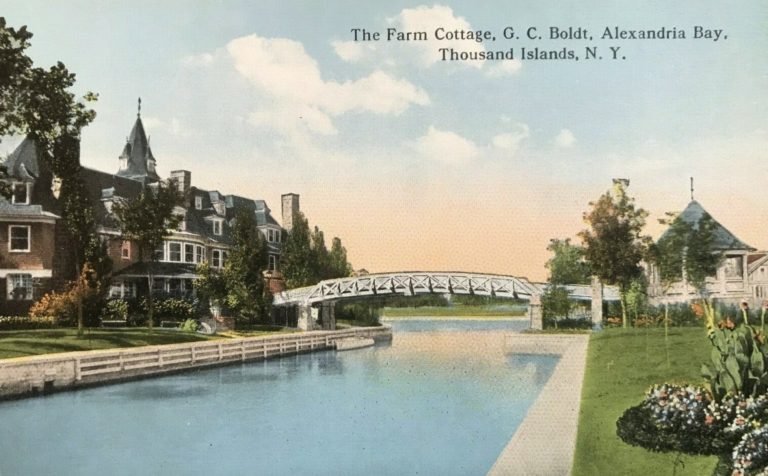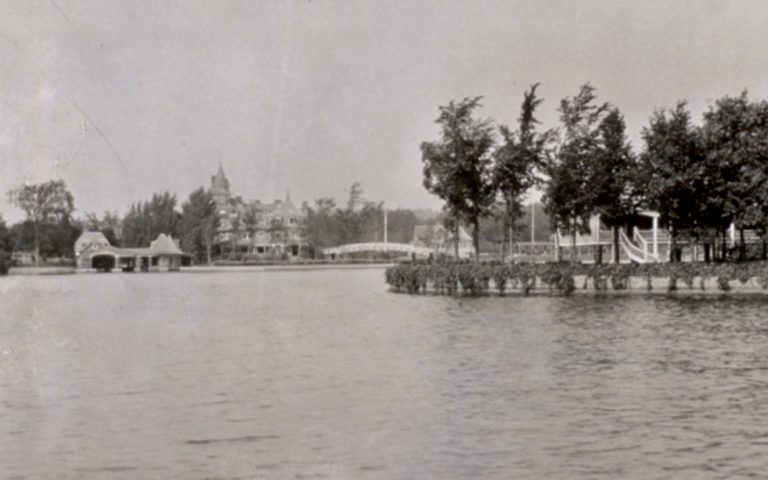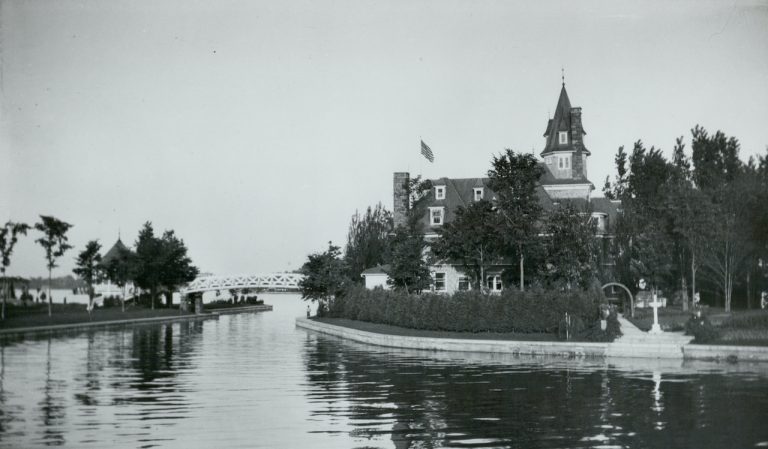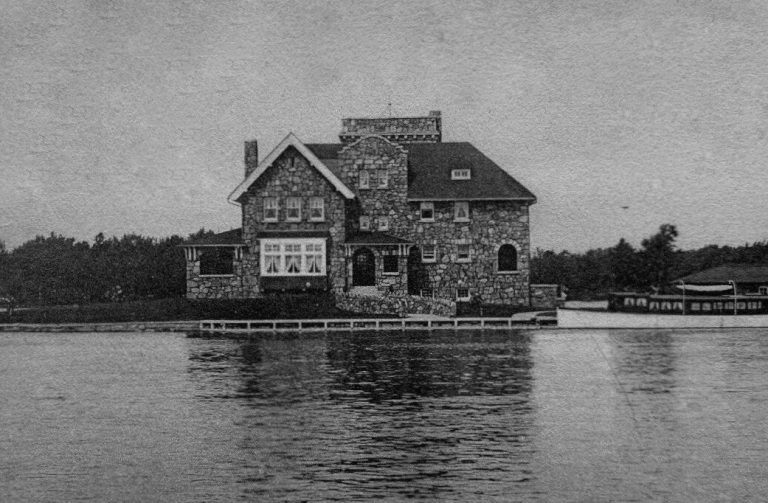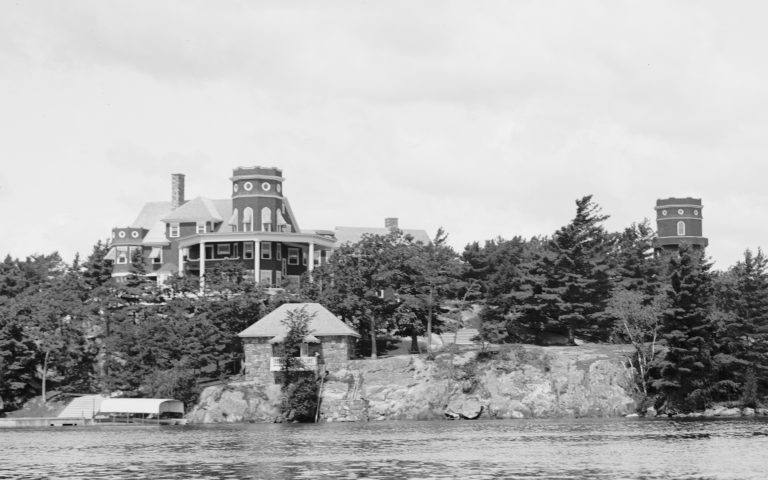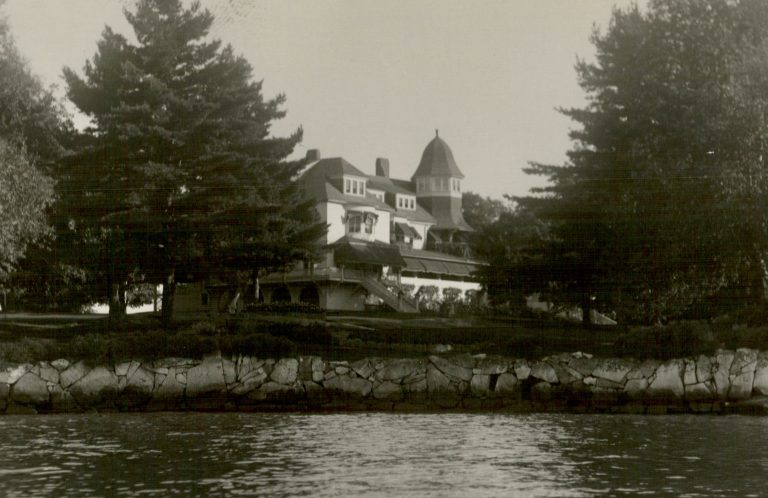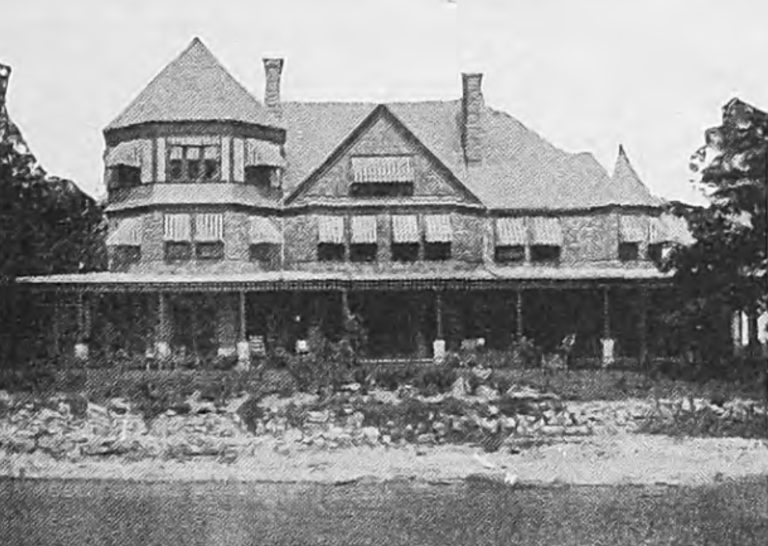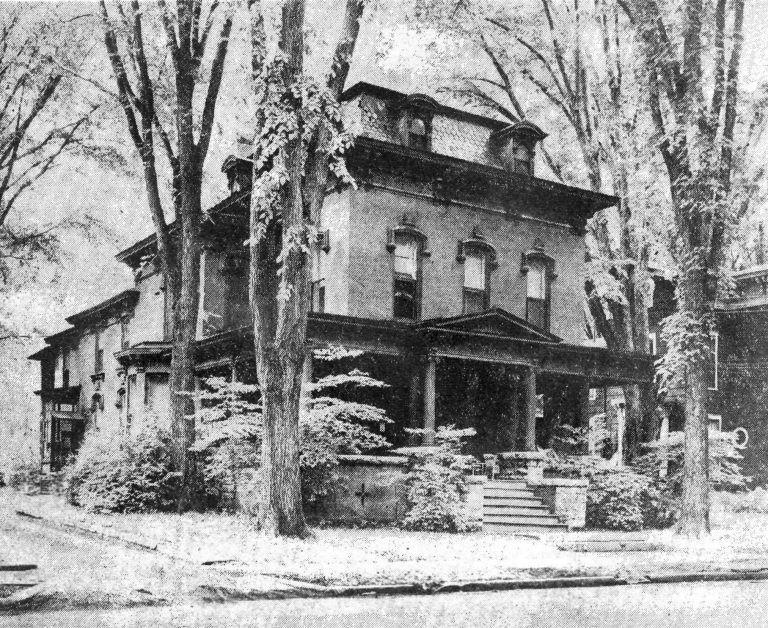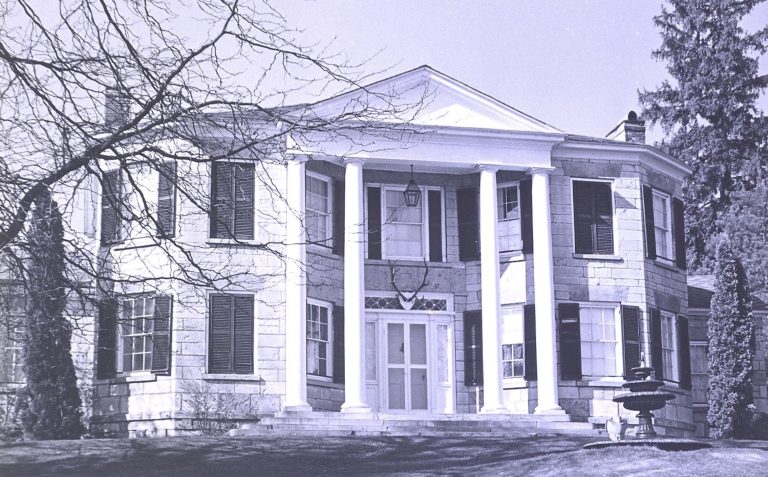George Boldt’s Wellesley House on Wellesley Island
George Boldt‘s Wellesley House is often overshadowed by the Waldorf-Astoria proprietor’s construction of Boldt Castle on Heart Island, which was conducted around the same time. While overshadowed is an appropriate term for perhaps any property on the St. Lawrence in comparison to Boldt Castle, with over 50 rooms and a large presence on the canal Boldt had created between Wellesley and Tennis Island, Wellesley House was, without doubt, one of the largest summer homes in the 1000 Islands.
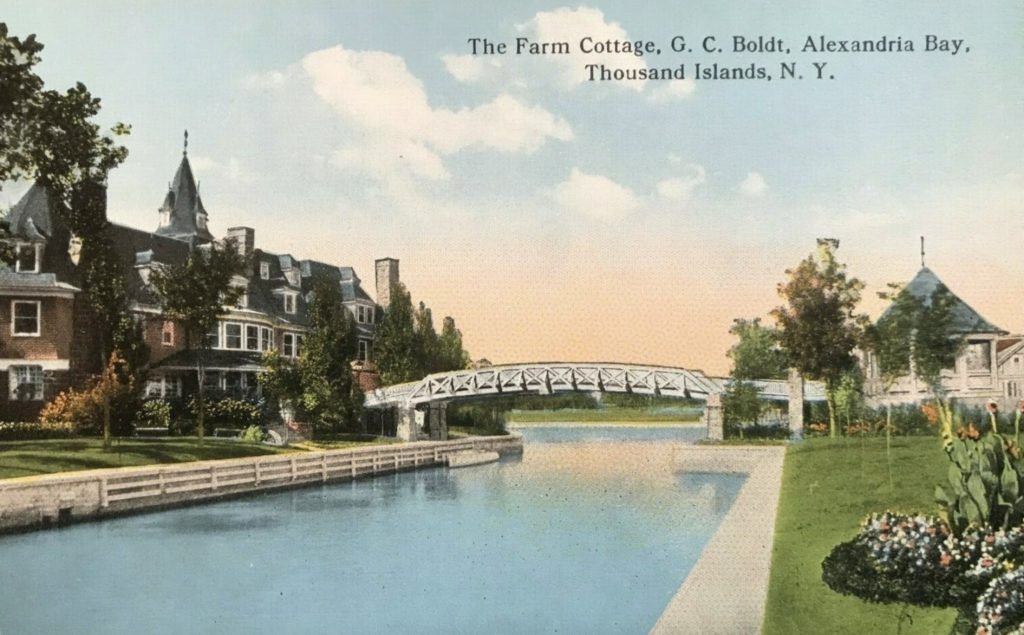
The Wellesley House’s enigmatic nature makes it such an intriguing property. This may be attributed in part to its second-fiddle nature to the castle and a lack of reference to a definitive name, which makes a difficult search for information. The term Wellesley House was used by the Watertown Daily Times, and whether or not it’s universally accepted, for the lack of anything better, it’s what it will be referred to herein and not to be confused with the Wellesley House in Thousand Island Park (true, the newspaper referenced two distinctly different places on Wellesley Island with the same name. Confusing? You bet.)
Other terms found were Farm Cottage and Farm House, amongst one or two others, but no doubt some confusion is partly due to the amount of property George Boldt had constructed on Wellesley Island. The Swiss Chalet, the Yacht House, the Birches, the Tennis House, the many cottages… all represent a staggering amount of property he had acquired in addition to Heart Island, Hopewell Hall, Belle Island, a couple of other islands and property in Alexandria Bay – some of which will be discussed further below.
In 1899, the Cornwall Bros. would sell their several hundred-acre farm on Wellesley Island to George Boldt. Boldt intended to erect a modern farmhouse and stables and raise stock. When his Bellevue-Stratford Hotel was completed in Philadelphia in 1904, Boldt would supply it with stock straight from his farm on Wellesley Island. Throughout the next several years, Boldt would begin buying up land, a parcel here, three there—a practice that continued for the remainder of his life.

In August of 1902, the Watertown Daily Times would report on an ambitious project Boldt had underway on Wellesley Island–
Alexandria Bay, Aug. 15 – Work has been commenced on the large canal that George C. Boldt of New York is building on Wellesley Island between the mouth of Mud Creek, opposite Alexandria Bay, and Lake Waterloo. A large steam dredge owned by Daly & Hannan of Ogdensburg, who have taken the contract for building the canal, arrived on the spot Thursday and yesterday began the work of dredging.
Another dredge will be put at work as soon as it is possible for two of them to work at the same time. The canal will be 10 feet deep and 70 feet wide and about 2 miles in length.
It will follow Mud creek along the course for about a mile and will then branch of directly toward the lake. Part of the route will have to be blasted from the solid rock, which rises 30 and 40 feet above the level of the river in some places. The cost of construction will be over $100,000. This canal when completed will greatly shorten the route between Mr. Boldt’s summer home on Heart Island and Lake Waterloo, where the finest scenery and best fishing in the whole island region can found.
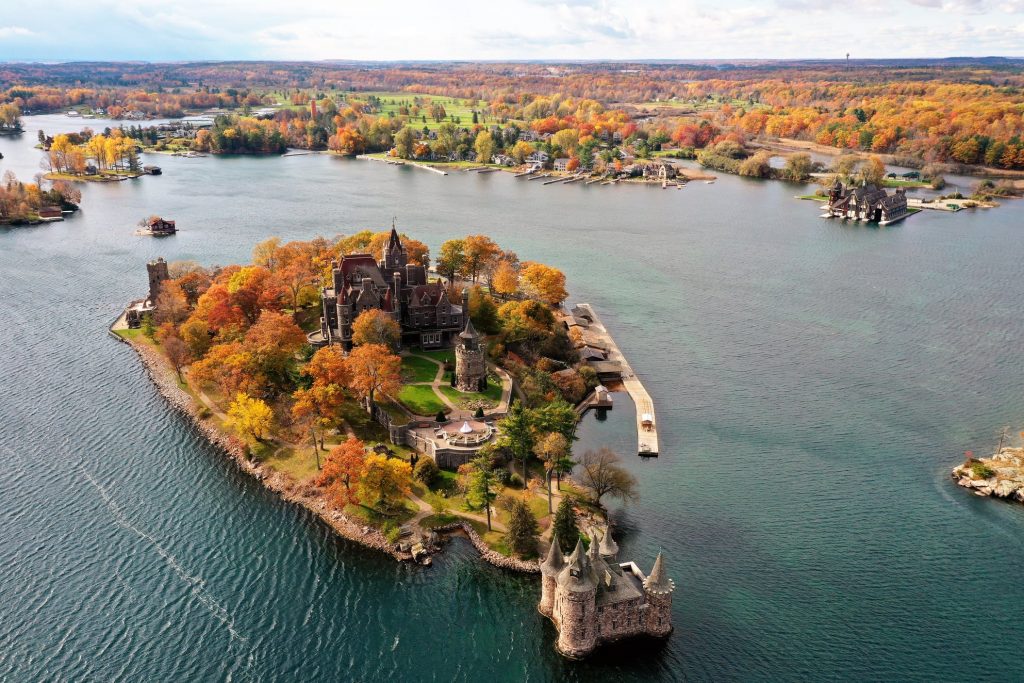
Very little press attention was given during this time to the construction of Boldt’s Wellesley House other than brief mention of Boldt at his summer home on Wellesley Island, often referred to by its former name, Wells Island, inspecting work that was being done there and on Heart Island.
After Boldt’s wife, Louisa Augusta Kehrer Boldt died in January 1904, work on the castle ceased—though, as will be noted later, some confusion ensued with reports of it starting up again over the years. Indeed, the newspapers would, on more than one occasion, have people believing the castle would be finished, and it was George’s intent to do so—but he would first focus on improvements to his Wellesley Island properties.
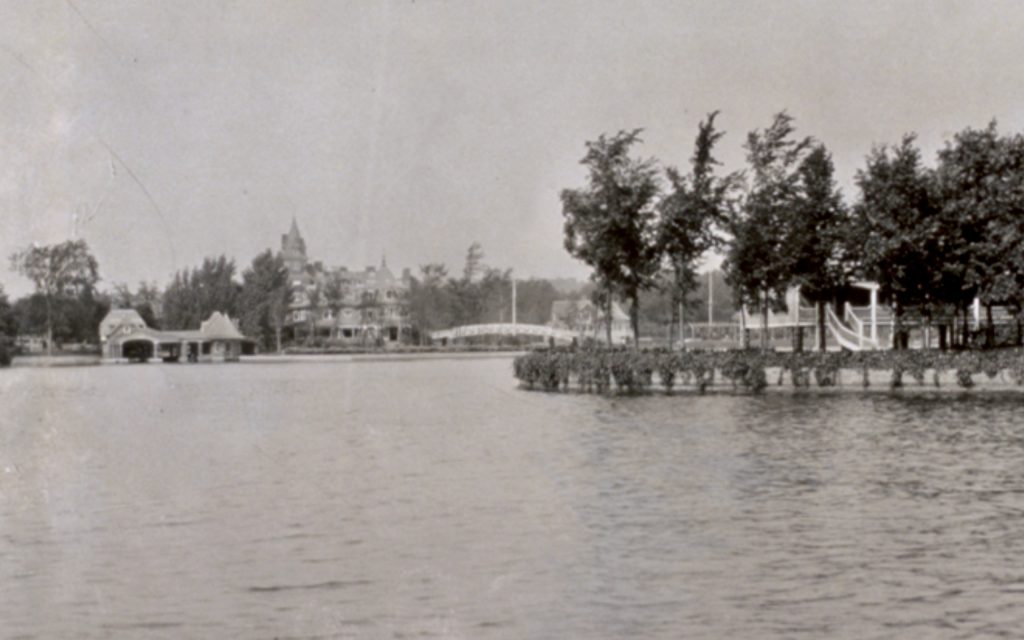
In July of 1905, work had started on a water system for Boldt’s property. A large standpipe compatible with the size of the one in the village of Alexandria Bay was erected, and the water system was installed. A year later, about $55,000 worth of improvements had been made to his farm and Wellesley House where it was said by The Times, “He has one of the model places in the country.” The Times would also state Boldt’s supposed intention to turn his incomplete castle into a hotel–
It can be authoritatively stated that Mr. Boldt will do no work upon his million dollar home here until fall, when a gang of men will be set to complete the work begun five years ago, but on which nothing has been done for the last two years, owing to Mrs. Boldt’s illness and death.
Later that summer, the first reports of vandalism on Heart Island would be reported in the paper. A year later, in August of 1907, more rumors swirled about and landed in print: “Work On Superb Boldt Chateau To Be Resumed” —
Because of the earnest entreaties of his children, George C. Boldt, proprietor of the Waldorf-Astoria, will cause work to be resumed in the spring on the superb chateau which, in a partially unfinished condition, now surmounts the brow of the ridge on Heart Island in the midst of the Thousand Islands.
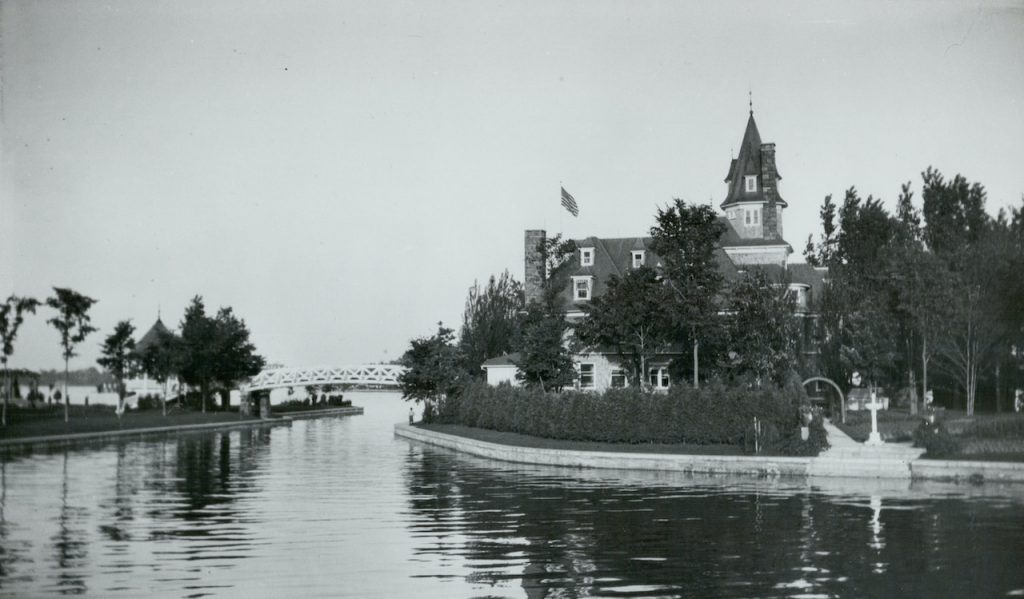
Even by June 6, 1908, when no work was reported, rumors persisted with layouts of the interior completed and the building of two ships in New Jersey to be delivered in 1909 for transferring guests from both Alexandria Bay and Clayton in the works. In August, Mr. Boldt would talk of his plans and intentions in an illuminating article in the Watertown Daily Times printed on the 6th—
According to Mr. Boldt’s own statements, he was cramped for money some time ago and work on the house simply stopped. Mr. Boldt said that when he bought the Bellevue-Stratford in Philadelphia he expected to spend $4,000,000 on additions, furnishings and improvements, but when he was through he had spent $9,000,000, and in consequence the outlay in other directions had to stop.
Of late, some work has been done on the castle and shortly a gang of workmen will against start in and probably the place will be finished soon.
“So for it’s being run as a hotel,” said Mr. Boldt, “that’s absurd. The rooms are not arranged suitably.If guests paid $100 a day each I couldn’t make a cent on my investment.”

Meanwhile, Boldt continued to spend time at Boldt’s Wellesley House with family, friends, and guests. One party from England in August 1910 included the Duke of Westminister, N. M. Robbins, and about forty other individuals.
Two years later, work would commence on the hotel on Wellesley Island property to be known as “The Club.” The new hotel would reportedly have 250 rooms and sit upon his golf links to be completed by 1914 and cater to the class of people who frequent the Waldorf-Astoria in New York City.
The summer would also bring an invitation from Boldt to officials from both the City of Watertown and Jefferson County to Boldt’s Wellesley House – an entourage and band that consisted of 300 people as part of a trip to Kingston, Ontario. The Times would report–
The feature of the whole trip was the visit to the palatial summer estate of George C. Boldt, the proprietor of the Waldorf-Astoria. Never have the officials of Watertown, Jefferson County and their friends ever been treated to such hospitality. The steamer Thousand Islander arrived at the new landing in the rear of the estate about 6. The visitors spend about an hour on the island.
When the party landed a parade was formed, with Mayor Francis M. Hugo and Mr. Boldt leading. The Watertown City band came next and the excursionists followed two by two. The parade was led through the beautiful winding walks of the estate and finally arrived at the club, where a buffet lunch was served to every one of the party. It was here that the hospitality of Mr. Boldt asserted itself to the full. After the lunch the party spend about 30 minutes wandering around the beautiful grounds and finally boarded the steamer for Alexandria Bay. As the party marched to the club house the line of the officials was fully a half of a mile long.
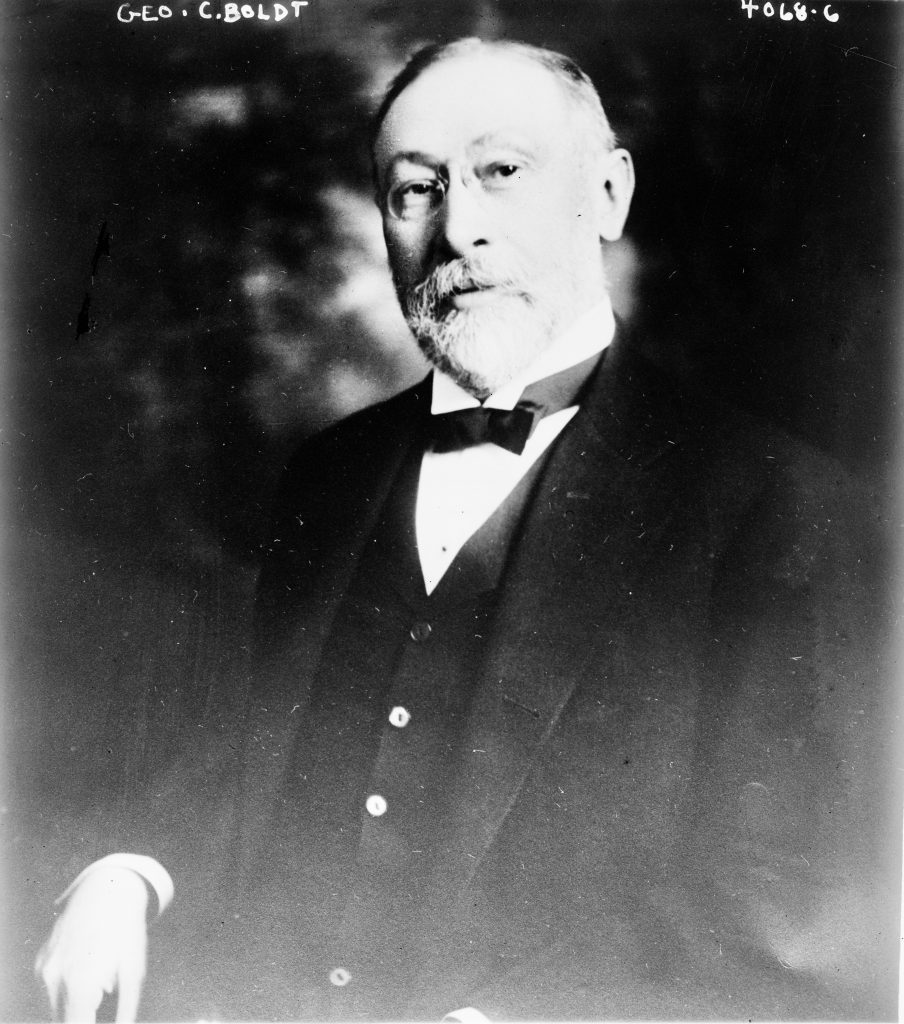
Three years later, in 1915, much discussion amongst the resorts was had regarding the big country clubhouse Boldt had started three years prior. It was believed to be completed later that year, “for the benefit of the millionaires and others to participate in and attend the polo games on Mr. Boldt’s grounds.” Oddly enough, The Times would state that the steel frame was completed and everything else ready to move forward with the building.
Former Secretary of State John W. Foster Proponent of Boldt Castle as “Summer White House.”
In 1915, a couple of locations were discussed for a presidential “White House” summer home. The original Shadow Lawn, the mega-mansion in West Long Branch, New Jersey, earned the nickname of “White House by the sea” before it was even completed in 1904 when Teddy Roosevelt was a guest at John A. McCall‘s summer home. Now, in 1915, talks were being made of acquiring Boldt Castle for a presidential retreat, of which former Secretary of State John W. Foster was a proponent (Foster had a summer home in nearby Henderson Harbor). As reported in The Times–
Alexandria Bay, July 29 — John W. Foster, former Secretary of State, while in this village yesterday, expressed himself as very much in favor of the government buying the Boldt Castle on Hart (sic) Island for the use of the president during the summer.
Mr. Foster, who is at his summer home at Henderson Harbor, paid a visit to O. G. Staples, proprietor of the Thousand Island House, who is back of the movement, and this morning Mr. Staples said that Mr. Foster was very enthusiastic over the movement.
Mr. Staples plans to have a measure brought before congress to appropriate $500,000 with which to purchase the property, at the next session.
A letter was received from George C. Boldt, owner of the Hart Island, and much other property near this village, by Mr. Staples. Mr. Boldt is willing and anxious to sell Hart Island.
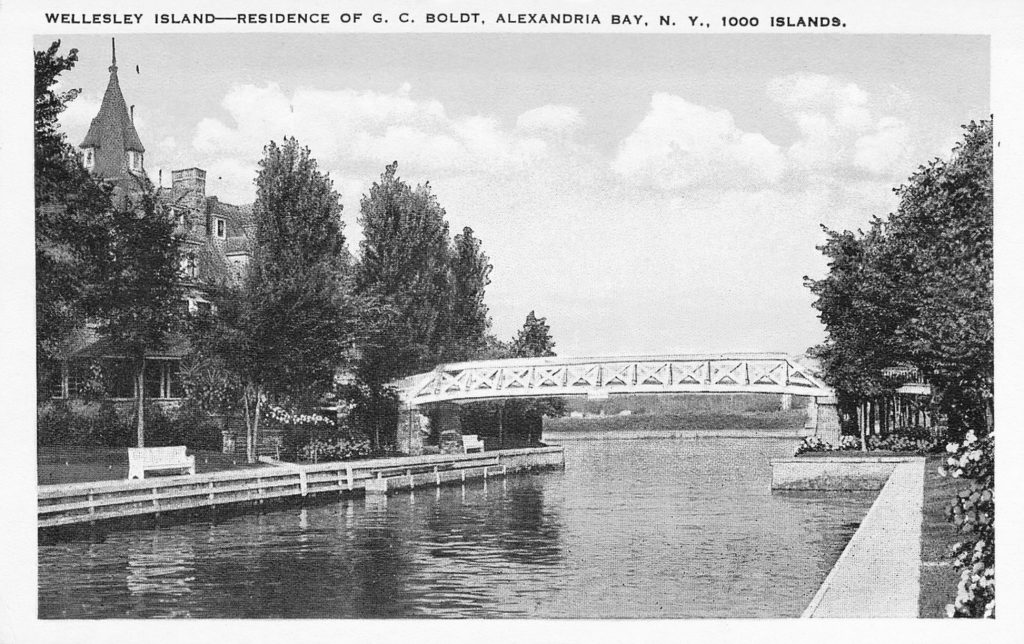
The plan never came to fruition and President Woodrow Wilson would run his re-election campaign and accept his party’s nomination from Shadow Lawn which would be destroyed by fire in 1927 and replaced with another “Shadow Lawn,” built by then F. W. Woolworth President Hubert Templeton Parson, consisting of over 100+ rooms and is currently part of Monmouth University’s campus.
Before his death in December of 1916, the big hotel near the Boldt farm on Wellesley Island still remained unfinished after starting three or four years prior. The steel framework had become something of a landmark for tourists passing by, but the increasing crowds and visitors that summer prompted discussion in September of completing it. Just under three months later, Boldt would be stricken at his Waldorf-Astoria apartment and pass away on the 5th of December.
For a number of years after Boldt’s death, his daughter Clover and husband A. Graham Miles would reside in Boldt’s Wellesley House as their summer home.
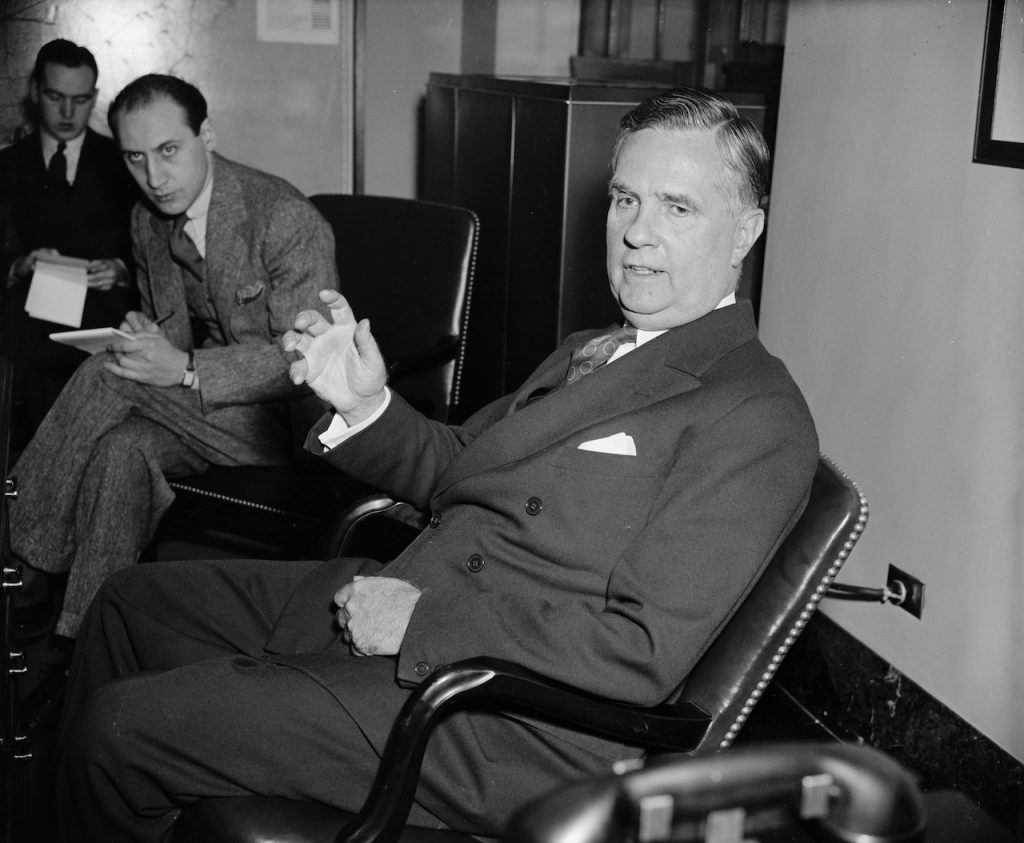
E. J. Noble, George Boldt’s Son-In-Law A. Graham Miles, Purchase Boldt Estate Including Castle and Wellesley House
In 1921, J. B. Taylor, who knew a thing or two about mansions and the Boldts, proposed using Boldt Castle as a summer White House for the president of the United States. Shortly afterward, Edward J. Noble, president of the Mint Products Company known for the Lifesaver candy, and Clover’s husband, A. Graham Miles, purchased all of the Boldt Estate located in the Thousand Islands in June 1922.
The purchase included Wellesley Island, Country Club, Hopewell Hall, The Birches, fields and other islands and mainland properties, to include furniture and equipment estimated to be valued at $5,000,000 ($84,439,285.71 and rising in 2022 currency value.)
The Wellesley House would be included with the property of Wellesley Island. As the Watertown Daily Times noted of the property in their June 3, 1922 article of the sale—
This property is situated on a system of canals which Mr. Boldt dredged out, and at this point an artistic bridge connects it with the Tennis House property, occupied for the last several seasons by William H. Downey and family. The Tennis House, though smaller than the Wellesley House, is a beautiful estate.
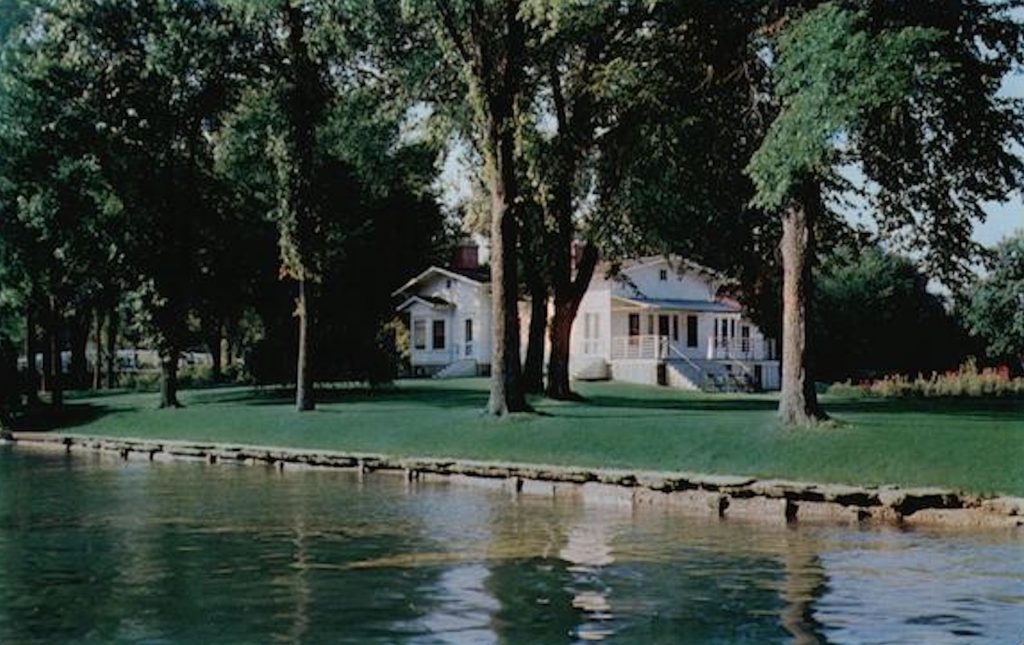
A later article would note the Wellesley House as being upwards of 50 rooms and by far the largest summer cottage at the 1000 Islands. In 1927, Noble would look to open the Wellesley House to the public as “a new sort of club house,” per the Daily Times.
In 1945, E. J. Noble would sell most of the old Boldt Estate to Canada Lines, but retain Boldt Castle and Heart Island. The company’s plans included modernizing and refurnishing Wellesley House and Swiss Chalet to accommodate 40 or 50 guests each.
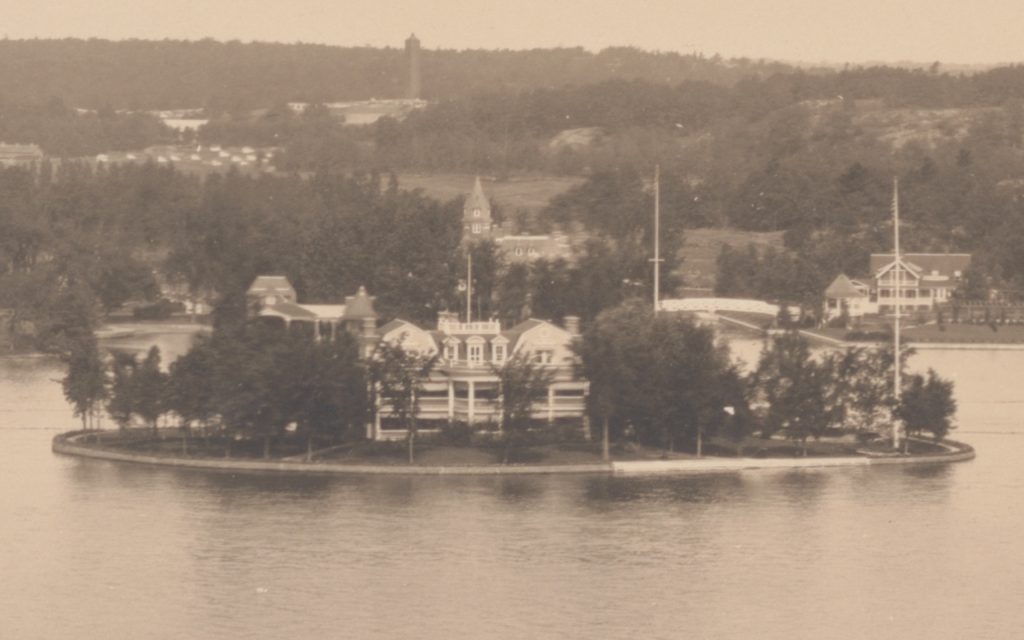
Mr. Noble would buy the property back in 1950, completing the transaction from his offices at ABC Network, which he had founded. The news did not list the Wellesley House in particular but noted the steamship line that purchased the property was abandoning its cruise ship business on the St. Lawrence River. Noble’s purchase included “the 50-room club, golf-course and its clubhouse and several cottages, 1,000 feet of waterfront on the south shore of Wellesley island and about 175 acres of land.”
No further information was found on the Wellesley House until February 1986, when a fire destroyed it—assuming it was the same Wellesley House. No details were provided that would clarify other than that it was the one on Wellesley Island and not the Wellesley House in Thousand Island Park. If so, it marks something of an odd ending for such a prominent summer home with nary a mention of its storied history.
The area, in general, has since become a townhouse development.
